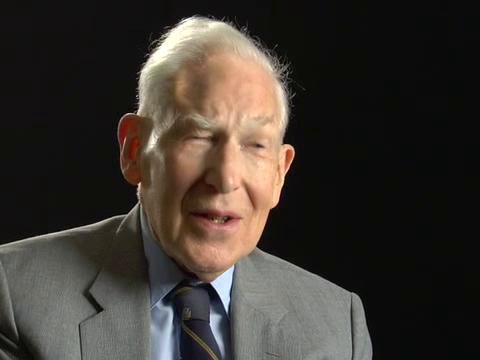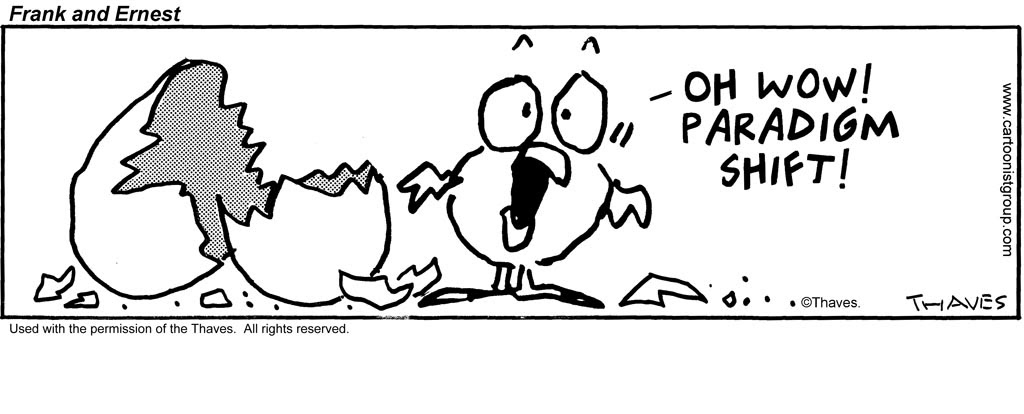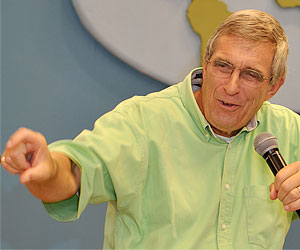By Image taken from About.com, Fair use
Followers of Jesus must have nothing to do with the creation and perpetuation of distorted narratives, for doing so runs counter to our core commitments. We are people of the truth. The dominant, postmodern culture rejects transcendent, objective reality and moral order—but we affirm it! A real, objective world exists outside of our minds, and it won’t conform itself to our beliefs. Truth exists. Truth matters. Facts and evidence matter.
This commitment to facts, evidence, and truth rests on a solid theological reality. God exists, whether we believe in Him or not. Jesus said, “I am … the truth.” John 17:17 tells us that “God word is truth. Similarly, we read that “Every word of God proves true” in Proverbs 30:5. Narratives, by contrast, are based on distortion and deceit which is the primary tactic of our adversary. John 8:44 says, “When [Satan] lies, he speaks out of his own character, for he is a liar and the father of lies.” God never engages in deceit or distortion. Titus 1:2 tells us that “God never lies” and Hebrews 6:18 says, “It is impossible for God to lie.”
All who affirm the doctrine of special revelation will resonate with these scriptural testimonies. But this witness is not restricted to the Bible alone. The reformers spoke of additional “books” that give witness to the truth. As Darrow Miller has written, “Truth is found at the intersection of the books of Scripture, nature, and reason.”
Our guiding principle must be: “Follow the evidence wherever it leads.” We must be open to changing our own strongly held positions IF the weight of the evidence demands it. After all, our faith rests on historical facts and evidence. In the words of the Apostle Peter: “We did not follow cleverly devised stories [he might have said narratives] when we told you about the coming of our Lord Jesus Christ in power, but we were eyewitnesses of his majesty” (1 Peter 1:16).
The Apostle Paul commended the quest for truth in Acts 17:11: “Now the Berean Jews were of more noble character … for they received the message with great eagerness and examined the Scriptures every day to see if what Paul said was true” (italics added).
 In the powerful words of J.I. Packer: “The Evangelical is not afraid of facts, for he knows that all facts are God’s facts; nor is he afraid of thinking, for he knows that all truth is God’s truth, and right reason cannot endanger sound faith … A confident intellectualism expressive of robust faith in God, whose Word is truth, is part of the historic evangelical tradition. If present-day evangelicals fall short of this, they are false to their own principles and heritage.”
In the powerful words of J.I. Packer: “The Evangelical is not afraid of facts, for he knows that all facts are God’s facts; nor is he afraid of thinking, for he knows that all truth is God’s truth, and right reason cannot endanger sound faith … A confident intellectualism expressive of robust faith in God, whose Word is truth, is part of the historic evangelical tradition. If present-day evangelicals fall short of this, they are false to their own principles and heritage.”
Now just because truth exists doesn’t mean that it is easy to understand, or that we can fully understand it. Rather, we are to search it out, and to understand as much as our finite, fallen minds are able. With God’s help, we can see the “big picture” more clearly over time, for He provides His children with “the Spirit of Truth” to “guide you into all truth” (John 16:13). Even so, uncovering the truth in an age dominated by distorted narratives requires hard work. Those that perpetuate narratives count on the fact that most people will not do it—will not want to do it, but instead, “will gather around them a great number of teachers to say what their itching ears want to hear” (2 Timothy 4:3).
Let us not be counted in their number. Instead, let us joyfully pursue the truth. Let us think like detectives, hunting down facts and evidence, trying to see the bigger picture. We’ll have to factor in bias, including our own. We’ll have to seek out information from all sides—left, right and center. It requires diligence, commitment and perseverance, but in the end it is worth it, for truth is our only hope in a culture dominated by distorted narratives. Narratives are a form of manipulation and bondage, but the truth will set us free (John 8:32).
Two questions to test for narratives
To counter narratives, you must first be able to identify them. Because distorted narratives have rapidly multiplied in our postmodern culture, this is not so easy. Here are two ways to test for truth and begin to identify narratives.
Where does this story draw the line between good and evil?
In our fallen world, things are rarely as simplistic, or black-and-white as they are portrayed in narratives. The truth is almost always more complex and nuanced. Unlike narratives, truth can’t be reduced to sound bites. Narratives are intended to appeal to our emotions and innate sense of justice, which is why they cast villains and victims in sharp relief. But the real world almost never functions like this. Rather, in the immortal words of Aleksandr Solzhenitsyn: “The line separating good and evil passes not through states, nor between classes, nor between political parties either — but right through every human heart” (emphasis added). Narratives almost always draw the good vs. evil line between people or groups. This group is good. That group is evil. This group is comprised of victims. That group is comprised of oppressors. But as Solzhenitsyn understood, “There is no one righteous, not even one” (Romans 3:10). Apart from the forgiveness offered by Jesus, all of us stand condemned.
How do people respond when their narrative is challenged?
If you suspect someone is promoting a narrative, watch how they react when presented with facts and evidence that challenge the narrative. If they become agitated, defensive, or hostile—if they show no interest, if they don’t listen, if they look for ways to immediately discredit countervailing facts and evidence, beware. You are almost certainly dealing with a narrative. By contrast, truth-seekers welcome questions and opportunities to dialogue. They desire to learn more, to be exposed to facts and evidence they may not have been aware of. They do not try to shut down debate or say “there is nothing more to discuss.” They do not cynically shut down discussion by saying “both sides have their facts,” implying that a fuller understanding of the truth cannot be known, and to seek it out is fruitless.
As Christians, we must refuse the temptation to promote distorted narratives. We must refuse to uncritically accept the definitions of victim and villain presented by the narrative. We must be open-eyed about the goals that narrative creators and perpetuators are pursuing. They will almost never state these goals explicitly, but we must try to discern to what ends they are employing their deception. We must never willingly allow ourselves to be manipulated and ensnared in a web of lies and distortions. Rather, we must be committed to the truth above all else. A popular expression of the 1960s counter-culture movement was “question authority.” Today, we must tap into this same spirit, but our rallying cry must be: “Question the narrative!”
- Scott Allen






